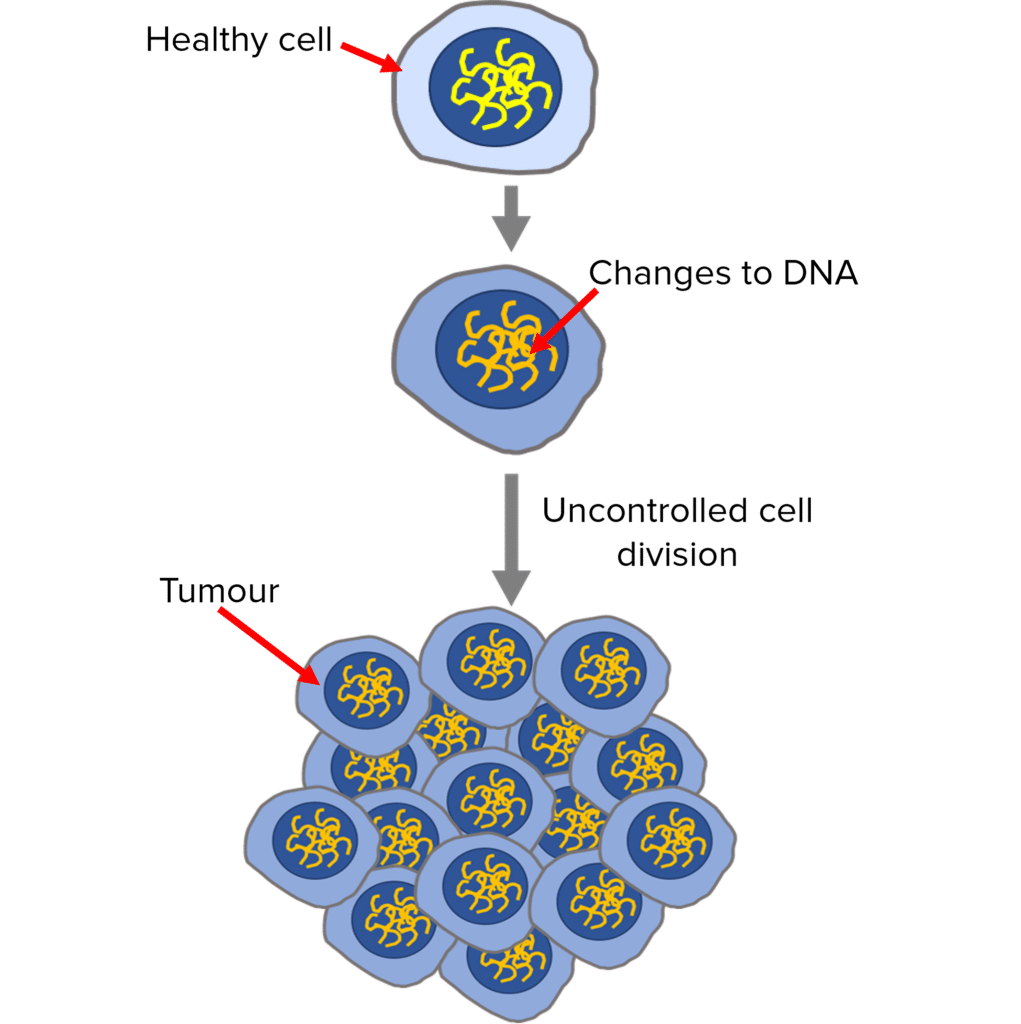Cancer
Cancer Revision
Cancer
Tumours are formed when cells divide uncontrollably and can be benign or malignant. Cancers are malignant tumours and can be fatal. The chances of developing certain types of cancer can be increased by various risk factors.
Growth of Tumours

Cell division by mitosis is controlled by many different genes to produce the correct amount of cells needed by the body.
Changes to the DNA of cells may mean that genes can no longer regulate mitosis and therefore cells grow and divide uncontrollably, forming tumours.
Tumours can be benign or malignant (cancerous):
- Benign tumours usually stay in one place in the body, within a membrane. They therefore do not invade other tissues and are most often harmless.
- Malignant tumours are cancerous. They can spread to neighbouring healthy tissues or break off and travel in the blood and lymphatic system to other parts of the body. The spreading of the cancerous cells cause secondary tumours to form in different places. Cancers disrupt the functioning of healthy organs and therefore can be fatal.
Risk Factors of Cancer
Anyone can develop cancer but, like other non-communicable diseases, there are several risk factors that increase the likelihood of an individual developing the disease:
- Obesity has been linked to bowel, liver and kidney cancer.
- Smoking has been linked to lung, mouth, throat, bowel, stomach and cervical cancer.
- Exposure to UV (from the sun and tanning beds) increases the risk of skin cancer.
- Viral infections can trigger the formation of certain cancers e.g. cervical cancer from HPV virus and liver cancer from hepatitis B and C.
- Sometimes faulty genes can be inherited that increase the likelihood of an individual developing certain cancers, e.g. breast and ovarian cancer from faulty BRCA genes.
Cancers can develop in anyone, in any part of the body, at any time. However, the risk of cancer can be reduced by limiting the amount of risk factors, e.g. eating a balanced diet, exercising, not smoking, limiting time in direct sunlight.
Fortunately, cancer survival rates have increased due to extensive research, increased screening and development of treatments.
Cancer Example Questions
Question 1: Describe the formation of a tumour.
[2 marks]
The DNA of a healthy cell changes / mutates, which causes uncontrolled cell division / mitosis.
Question 2: State 2 differences between benign tumours and malignant tumours?
[2 marks]
Any 2 from:
- Benign tumours are often harmless, malignant tumours are harmful / dangerous / fatal.
- Benign tumours stay in one place in the body, malignant tumours travel around the body.
- Malignant tumours are cancerous, benign tumours are not.
- Malignant tumours can form secondary tumours, benign tumours do not.
Question 3: Name 2 ways to prevent bowel cancer.
[2 marks]
Any 2 from:
- Having a healthy / balanced diet.
- Doing regular exercise.
- No smoking / limit smoking.






